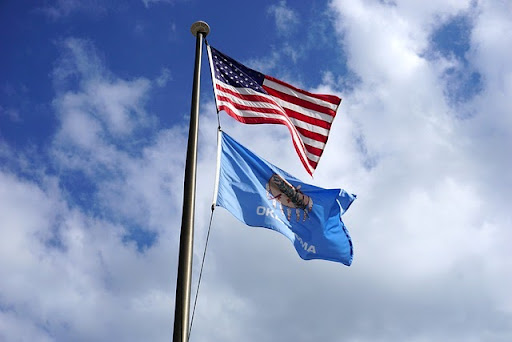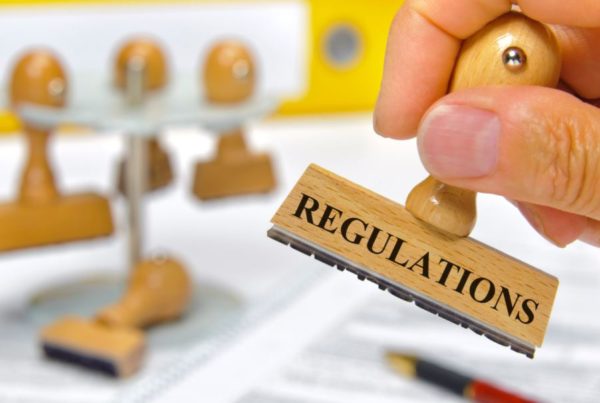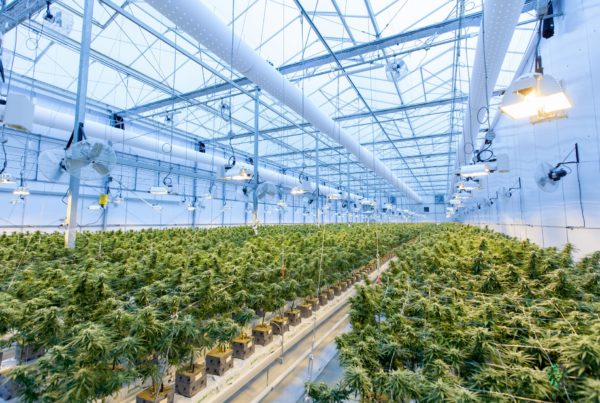The cannabis industry in California took off in 1996 with the passage of the Compassionate Use Act. And since 2016, both medical marijuana and recreational cannabis are legal in the Golden State. But if you want to consume cannabis or become a part of this fast-growing industry, you need to familiarize yourself with a labyrinth of complex cannabis regulations.
The three state-wide cannabis authorities that previously regulated the cannabis market merged on July 1, 2021, to create the Department of Cannabis Control (DCC). The DCC is in charge of establishing California’s cannabis policy for business licenses and retail sales.
Health and Safety Code
The Health and Safety Code, Division 10, Chapter 6, Article 2 describes the rules for the use and possession of cannabis by individuals along with the applicable sanctions for breaking these rules. The following are some of the key cannabis regulations in California:
- Adults aged 21 and above may:
- Possess up to 28.5 grams of the cannabis plant and 8 grams of concentrated cannabis
- Plant, cultivate, harvest, dry, and process up to six living cannabis plants in a private residence or in a structure built on a private residence that is both enclosed and secure
- Ingest or smoke cannabis products
- Buy, transport, and give away cannabis accessories to other adults 21 and above
- Cannabis users are not allowed to:
- Smoke or consume cannabis in public
- Smoke cannabis in any place where smoking tobacco is prohibited
- Smoke or consume cannabis while driving or while riding in the passenger seat of any kind of vehicle
- Have an open packet of cannabis in any kind of vehicle
- Smoke or consume cannabis within 1,000 feet of a school, day care center, or youth center while children are present
- Use a volatile solvent to manufacture concentrated cannabis without a license as described in Division 10, Section 26000 of the Business and Professions Code
- Transport, sell or give away cannabis without authorization. This is punishable by imprisonment and/or a fine. The consequences are more severe for supplying cannabis to minors.
The Medicinal and Adult-Use Cannabis Regulation and Safety Act (MAUCRSA)
The Medicinal and Adult-Use Cannabis Regulation and Safety Act (MAUCRSA) is the main statute in the Business and Professions Code pertaining to commercial cannabis activity in California. This act provides the framework for the licensing, oversight, and enforcement of cannabis businesses, including:
- Cultivators
- Distributors
- Retailers
- Manufacturers
- Microbusinesses
- Testing laboratories
Licensing
In California, cannabis licensing is broken up into categories depending on the kind of cannabis business being proposed. These are some of the requirements from the Business and Professionals Code, Division 10, Chapter 5:
Cultivators
- Maintain compliance with the California Environmental Quality Act (Division 13, Section 21000 on) to offset the environmental impact of marijuana
- State the proposed water source or sources that will be used for cannabis cultivation activities
- Provide a final streambed alteration agreement, draft streambed alteration agreement, or written verification that this is not needed, issued by the Department of Fish and Wildlife
- Allocate a maximum of one acre of total canopy for outdoor cultivation or 22,000 square feet for indoor or mixed-light cannabis cultivation
Retailers
- Must not sell alcoholic beverages or tobacco products
- Must not be located within 600 feet of a kindergarten, school, day care center, or youth center
All Licensees
- Operate in a location where they won’t exceed the legal ratio of cannabis businesses to population
- Submit fingerprint images electronically and pay the fee for a federal criminal history check
- Provide evidence that they are allowed to occupy and use the proposed location and that the owner has given their consent to permit cannabis activities on the property
- Provide a notarized statement that they will enter into a labor peace agreement (for businesses with 20 or more employees)
- Provide a valid seller’s permit number
- Provide any other documentation required by the department
- Pay the license fee
- Pay a bond to cover the destruction of cannabis or cannabis products if they violate the licensing requirements
- Provide a statement that the applicant will have one supervisor and one employee who has completed a 30-hour Cal-OSHA course authorized by the OSHA Training Institute Education Center
The state of California has a seed-to-sale tracking program that follows the flow of cannabis products from beginning to end. This program aims to prevent illegal cannabis activity and ensure the correct taxation of cannabis sales.
For the purpose of tracking, cannabis cultivators must report their crops at cultivation and harvest by entering information into an electronic database. Cannabis dispensaries must comply with the reporting of cannabis sales and payment of cannabis excise taxes, which currently stand at 15%.
Along the way, each licensee must fill out an electronic shipping manifest when cannabis or cannabis products are shipped. This form includes the following information:
- The licensees sending and receiving the products
- The date of the transaction
- The unique identifiers of the cannabis plants or products
- The quantity or weight of the products shipped and received
- The estimated time that the products will be sent and received
- The actual times that the products were sent and received
Using this detailed data, the department can find any irregularities in the data and investigate the source of the discrepancy. For example, part of a shipment of retail cannabis might have fallen off the back of a poorly maintained truck or been stolen from a manufacturer’s warehouse.
Disposal of Cannabis Waste
The same level of communication and regulatory compliance applies to the transportation of cannabis waste. Both the licensee and the waste facility licensee must fill out an electronic shipping manifest when handing over the waste material.
These are the additional regulations for cannabis waste disposal that apply to commercial cannabis cultivators, processors, nurseries, manufacturers, laboratories, and retailers:
Cultivators, Processors, and Nurseries
Cultivators, processors, and nurseries work with cannabis plant material in its most natural form. These licensees mostly generate organic waste in the form of root balls, fan leaves, stalks, and cuttings. In the state of California, these businesses are allowed to compost their waste onsite and don’t need to render their waste unusable and unrecognizable. Any cannabis waste not composted onsite must be transported and recycled by a solid waste facility as part of the licensee’s cannabis waste management program.
Manufacturers, Laboratories, and Retail Stores
Unlike licensees who work with organic plant matter, manufactures, testing laboratories, and retailers do need to render their cannabis product waste unusable and unrecognizable before it leaves the licensed premises. Depending on the nature of the cannabis product that needs disposal, the waste is typically rendered in the following ways:
- Remove the product from its packaging.
- Grind the material into small pieces.
- Mix the pieces with other, non-cannabis material so that only 50% of the mix is cannabis.
- Saturate the material with liquid to 20% of the total volume.
- Compress the material to half of its original size.
Cannabis waste can also be heated, shredded, or treated with chemicals to make it unusable. Shredding is one of the safest treatments to create an unusable condition whereas chemical cannabis treatments could pose a safety hazard to the facility and staff members. The DCC doesn’t explain exactly how the cannabis should be rendered, so it’s left up to licensees to decide.
Free Cannabis Programs
For many people with medical conditions, the retail prices of cannabis products are inaccessible, barring access to a treatment that could help. According to California’s cannabis regulations, cannabis businesses that are licensed for retail are allowed to donate marijuana to people with a state-specified medical condition, as long as specific conditions are met:
Conditions for the Donation of Cannabis
- To provide free cannabis to a medical marijuana patient or their caregiver, the licensee must verify the physician’s medical cannabis recommendations by checking that the physician has a license in good standing. They must also keep a copy of the patient or caregiver’s ID.
- At the time of making the donation, the retailer must designate the products as a “donation” for the electronic reporting of cannabis sales.
- The donation must not exceed the cannabis possession limits stated in Section 11362.77 of the Health and Safety Code.
- Retailers who are licensed for delivery may supply free cannabis by means of their delivery service, as long as all of the other conditions are met.
Patients can obtain medical cards from reputable sources like MMJ.com.
Familiarize Yourself With California Cannabis
California’s cannabis regulations are some of the oldest and most established in the country, beginning with the introduction of medicinal cannabis law in 1996 and continuing on to adult-use cannabis in 2016.
The ease of access to home-grown and commercial cannabis products for adults is well-balanced with strict sanctions for supplying cannabis to minors and adults under the age of 21. While the high excise tax raises the price of cannabis, this obligatory tax on sales of cannabis products helps to fund the regulation of the industry. More information about cannabis regulations can be found on the DCC website.






